AMT Agence Metropolitaine de Transport
(Edited by Jean-Francois Turcotte)
amtnews@canadianrailwayobservations.com
Three F59PH’s that had been leased to AMT from RB Recycling: RBRX 18520 18522 and 18533, (ex-GO 520, 522 and 533) are now leased to Metrolink for a period of 6-8 months to get them through the downtime anticipated in installation of Positive Train Control on the existing locomotive fleet.
Shoving on the rear of Metrolink train 689 (Irvine to Los Angeles) at Fullerton, CA on October 17th, is RB Recycling F59PH 18520 (ex-GOT 520), still in GO colors. Combined with coach 198, wrapped to promote Metrolink's weekend service, this has become a very colorful train! (Fullerton, California; September 17th, 2013) (Craig Walker photo with thanks).
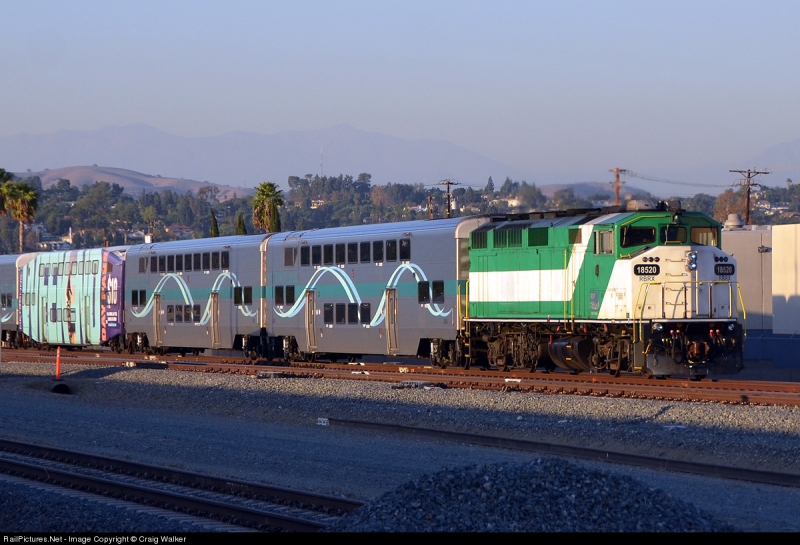
RBRX 18533 leads Metrolink train 688 through Santa Fe Springs, California, on October 22nd. This particular train set operates from Riverside to Laguna Niguel, then to Los Angeles, back to Riverside (via Fullerton), then down to Laguna Niguel one more time, then out to San Bernardino and, from there, to Los Angeles a second time. After a short layover at Taylor Yard, it departs L.A. again heading to Irvine, then back to L.A., and finally back to Riverside ,,, a busy day!) RBRX 18533 is former GO Transit 533, and it is painted for a proposed commuter operation in Michigan that ended.
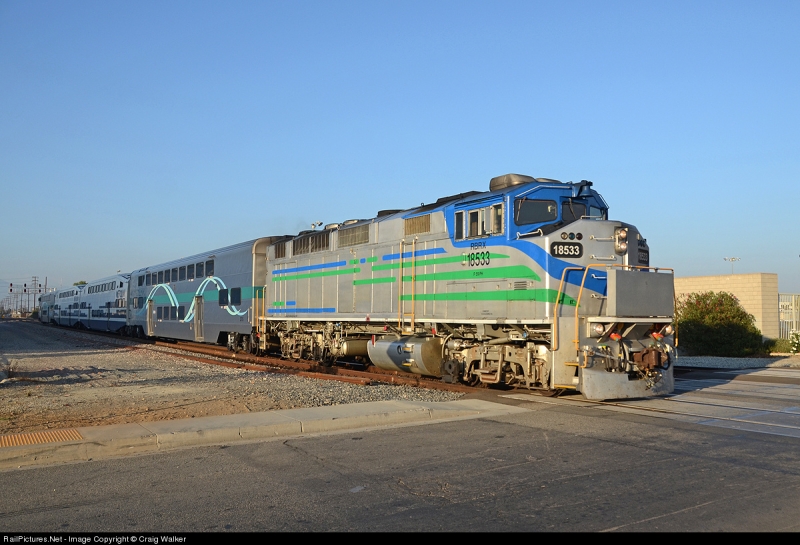
Dynamic testing of the ALP-45DP units (#1350-1369) in electric mode will resume in November 2013. AMT intends to deploy them with Bombardier Multilevel cars (3000’s) on the Deux-Montagnes line in early 2014.
On October 12-13-14, AMT had no service on the Deux Montagnes Line as construction on the flyover was being done at East Junction. The junction is now fully grade-separated, with CN’s single-track St-Laurent subdivision passing over the double-track Deux-Montagnes subdivision. Ongoing work at Jct de l’Est includes building a new electrified connecting track in the eastern quadrant, to be used by Mascouche trains when this line enters service in 2014. The track will be electrified up to the Ahuntsic station (under construction, to be located above l’Acadie Blvd). Ahuntsic station is where the dual-mode ALP-45DP will switch from electric to diesel, and vice-versa. A new #12 crossover allowing 30mph on the diverging route will also be installed south of the junction later this year.
October 12-13, ballast work was done on the AMT Vaudreuil Sub, causing complete cancellation of commuter trains on the Vaudreuil-Hudson line. Here we see two CP RAIL multimarked SD40-2's heading west through Pointe-Claire with a partially loaded ballast train, with a caboose at the end. Photo by Michael Berry from October 13th.
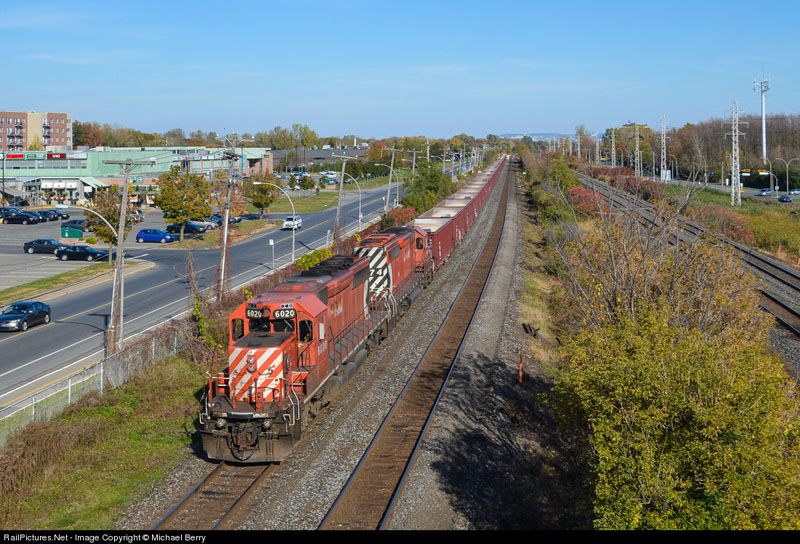
New CTC signals are currently being erected on CP’s Vaudreuil subdivision between AMT’s Ste-Anne-de-Bellevue and Baie d’Urfée stations. CP will replace the manually-operated (and seldom-used) crossovers by automatic 30mph-crossovers, as part of the Vaudreuil subdivision’s improvement plan aiming to increase AMT service on the Vaudreuil-Hudson line by 2014.
Montreal Box Cab Commuter Vignettes:
The two styles of vintage (ENGLISH ELECTRIC and GENERAL ELECTRIC) CN Boxcab Electrics are contrasted, as the 6716 rushes by on the main at Val Royal, with the 6711 waiting on the loop track to follow in March 1993. At this time they had acquired retired VIA coaches and modified the seating for commuter service, and changed the windows. Very soon, these relics would be retired and preserved in museums! (Robert Palmer photo with thanks)
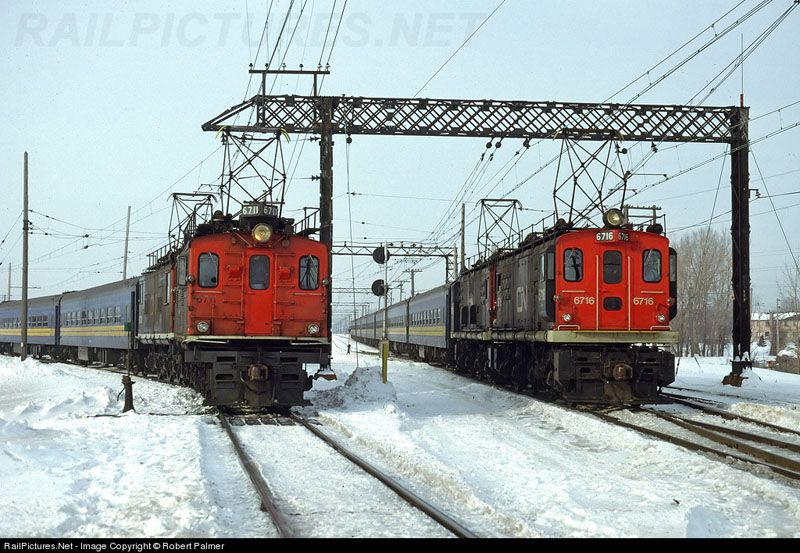
Derek Henderson shared his shots of EE-and GE built CNR Z4-a Box Cabs #180 and #187 at Mount Royal Station (north of Montreal on the Deux-Montagnes Line), taken in August 1965. Note that the EE and GE box cabs, and the trio of GE-built Center cabs used on this line were not compatible with each other.
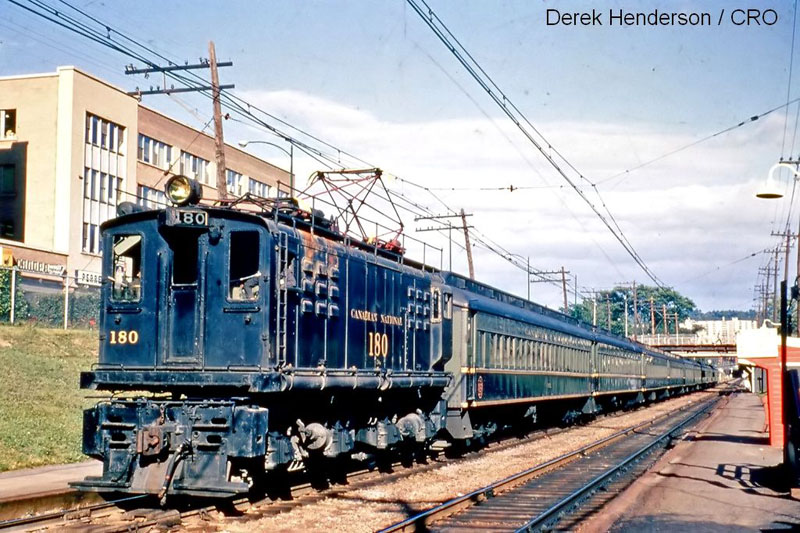
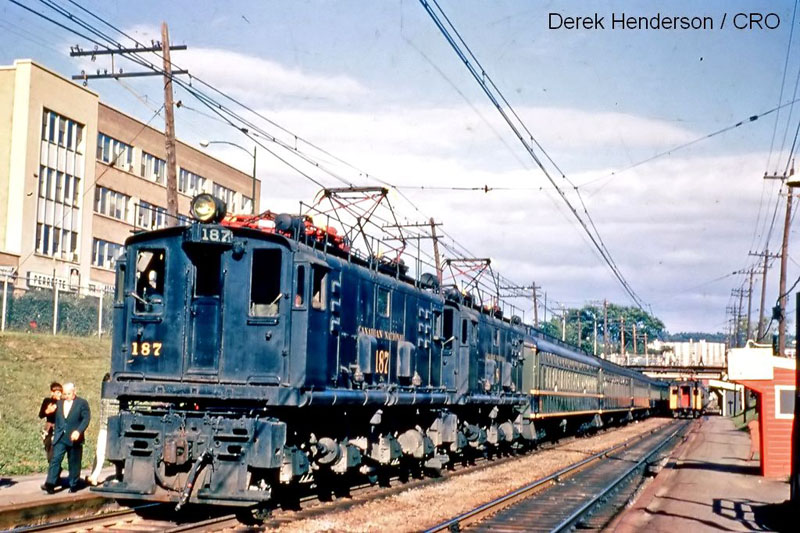
METRO EXPANSION
The October CRO edition showed two fantasy maps depicting hypothetical metro extensions of the 1970’s. A much more reasonable and official plan is shown from the following photo, courtesy of AMT’s Flick account:
While this schematic map does not display main roads, one can tell that the blue line extension closely follow Jean-Talon street between St-Michel (the line’s current eastern terminus) to Galleries d’Anjou (near the A25/A40 interchange).
The future extension of the yellow line would closely follow St-Charles street through old Longueuil’s, then veer south along Rolland-Therrien blvd.
The western leg of the orange line would roughly follow Marcel-Laurin blvd, intersect with AMT’s Deux-Montagnes line at Bois-Franc, cross rivière des Prairies near the Lachapelle bridge, then roughly following the Chomedey blvd up to Carrefour Laval. The eastern leg would meet the western leg at St-Martin near the Laval city hall.
METRO VIGNETTE:
The earliest of the Canadian Vickers-built built cars from the STM Montreal fleet were overhauled at AMF (CN Pointe St-Charles Shop) during the late 1980’s and early 1990’s. Pierre Fourneir shot one of the power cars up on the lift inside the huge erecting shop.
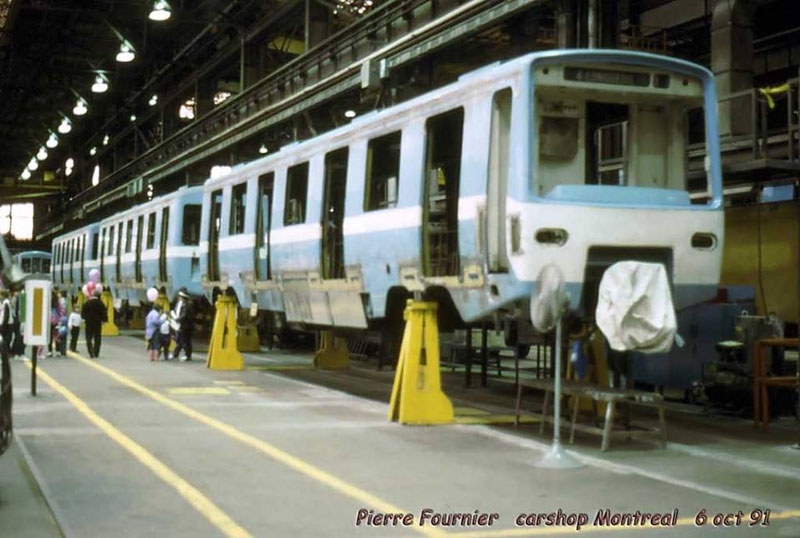
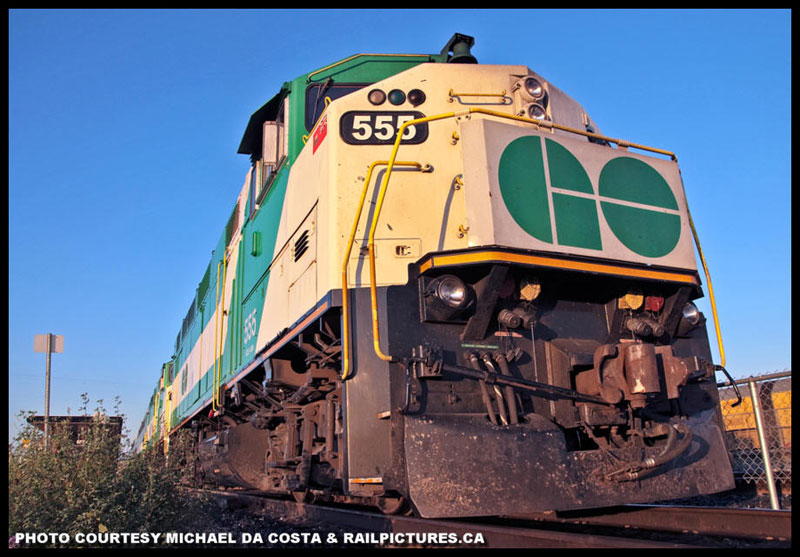
Trevor Heywood - GO TRANSIT EDITOR

My name is Trevor Heywood, and I am an Ontario civil servant. I have a Bachelor of Science in Environmental Sciences and Economics from the University of Guelph, and I am also a former GO Transit employee. I commute on the GO every day, and I am a huge advocate for improved regional rail transit throughout Ontario. As the new editor for this column, I hope to give you more insight into what has happened, as well as what’s being planned for GO, it’s parent agency Metrolinx, and it’s sister division the Union Pearson Express. If you have any feedback as to what you want see in this column, feel free to give me a shout.
GO Transit
Wilmerding, PA based WABTEC CORP announced in October its Motive Power subsidiary (MPI-Boise, ID) US$63 million contract with Metrolinx has all but completed the 10 new low-emission locomotives for GO Transit numbered GO 657-666. (Yes number “666”). The last five are explected to be painted in the new GO livery, The locomotives feature new engines that meet Tier 4 emission standards, and are based on the designs manufactured by MotivePower at its Boise, Idaho, facility, and are expected to be delivered beginning in 2014. The project follows a previous order from Metrolinx to repower 11 locomotives with the same advanced configuration, Wabtec noted. Metrolinx is an agency of Ontario province, and the regional transportation authority for the Greater Toronto and Hamilton Area, including GO Transit regional rail service. The locomotives also will include MotivePower's Central Diagnostic System, which provides remote diagnostic and health monitoring capabilities so that Metrolinx can proactively identify maintenance and operational needs. Other Wabtec units will supply control systems, event recorders, brake shoes, aftercoolers, and radiators for the locomotives, the company said.
The locomotives will be powered by two engines that meet Tier 4 emission standards, as set by the U.S. Environmental Protection Agency. The new engine technology will reduce diesel particulate emissions by about 85% and nitrous oxide (NOx) emissions by about 75% compared with current models, the company said. The twin-engine solution provides for both redundancy of major systems and flexibility of operation during off-peak periods, where running just one of the two engines can provide significant fuel savings on shorter trains. Wabtec Chairman and CEO Albert J. Neupaver said, "As new environmental standards are phased in over the next several years, MotivePower is well positioned to participate in this market by offering environmental and operational performance upgrades for new and existing diesel-electric commuter locomotives throughout North America."
As of October 1st, there was still no news on the other repowered GO units.
GO Transit is currently in the midst of a livery change. Pictures of the new livery were published in CRO’s August 2013 edition. GO units 607 and 2445 were redone in in the new two-tone colour that features a dark forest green on the top, a white band in the middle with a GO logo in the same dark green and bigger spacing, a light apple green apple strip below, and a black strip at the bottom.
Metrolinx has stated it will be repainting its rolling stock in the new livery as new orders are acquired, and existing stock is refurbished. Feedback from around the railfan community and throughout social media has been very mixed; some think its great to see a refreshed look, others are devastated that someone has tinkered with a good thing. GO 607 has had some minor modifications since, and been making the rounds, actively operating on various lines around the GO system. I spotted 2445 recently, still sitting at the VIA Toronto Maintenance Facility, and it has been repainted with old livery again, except for the doors.
I haven’t been able to get a good photo of 607, but I recently took a quick one with my cellphone as I was detraining at Bloor GO Station on my commute to work.

The Georgetown South Project is a massive construction project on the Weston subdivision consisting of: one new bridge structure; widening or modification to 15 other bridges; seven new road-rail grade separations; the West Toronto Diamond rail-to-rail grade separation; upgrades to Bloor, Weston and Etobicoke North GO stations; and related track and grading construction, civil works, signal installations and utility relocations along the corridor with minimal disruption to existing train operations and nearby neighbourhoods. The Project is achieving some key milestones.
The Humber River Bridge piers have been widened and spans for two north tracks have been installed. Trains began diverting onto these new spans on September 24, allowing crews to remove the old steel CN spans to the south.
At the West Toronto Diamond, crew have been pre-assembling two bridge decks to carry traffic overtop of the Weston sub: one for CP freight on the North Toronto sub, and another the CP wye between the North Toronto and MacTier subs, as well as Old Weston Road. These bridge deck assemblies and slides have been meticulously planned to prevent major disruption to CP traffic. Time-lapses of the slides were posted to Youtube, and are embedded below.
GTS North Toronto Bridge Deck Slide
GTS CP Wye / Old Weston Road Bridge Deck Slide
There has also been considerable progress at the Strachan Avenue underpass. Tracks have been laid in the completed north/east portion of the underpass, and trains began using them on October 21. This will allow crews to begin building the south/west portion of the underpass, and remove the level crossing. Below are some photos posted by the GO Georgetown South team via Twitter.
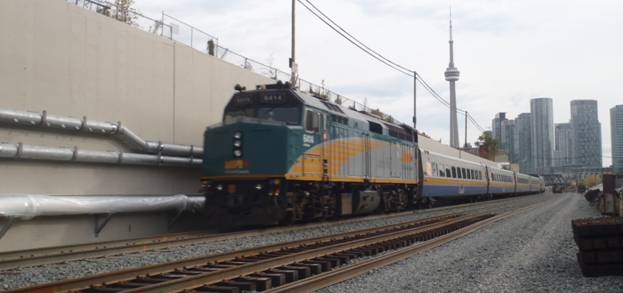
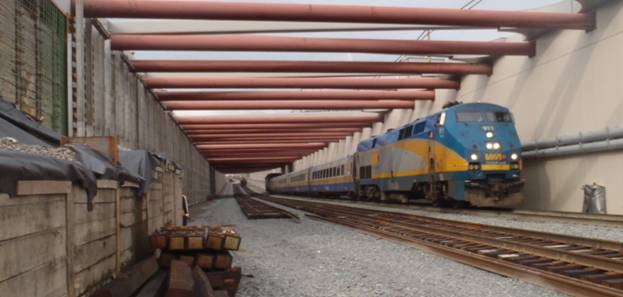
UP Express
The Union-Pearson (UP) Express is a planned rail link between Toronto’s two busiest transportation hubs: Union Station and the Pearson International Airport. From Union, the UP Express will run alongside Kitchener line GO trains on the Weston subdivision for 22 kilometres, before splitting off onto an elevated spur towards Pearson Terminal 1. The trains will run every 15 minutes, and take 25 minutes to complete its journey with stops at Bloor and Weston GO Stations.
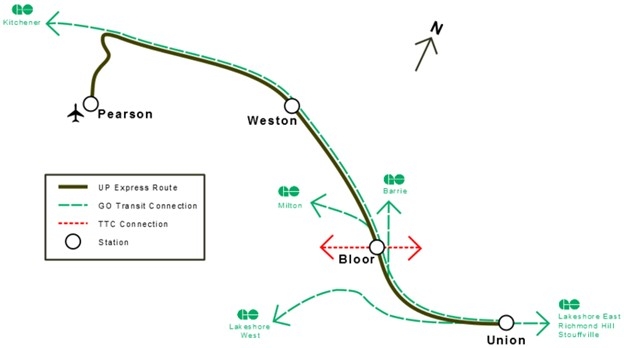
The rolling stock will be six consists of three diesel multiple units (DMUs) manufactured by Nippon Sharyo. The 12 A-cars (end units) are currently being built, and will be delivered to Metrolinx by August 2014 for testing. The six C-cars (middle units) are currently in design. Below is a rendering of an A-car, and a picture of it’s front shell being constructed.
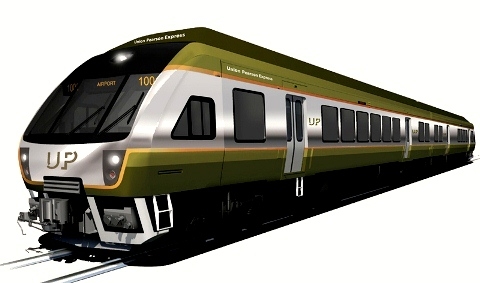
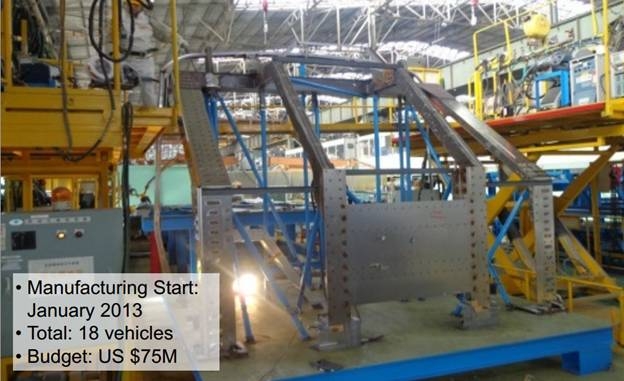
For the latest progress, see the September 10th report to the Metrolinx Board of Directors: UP Express Report
I hope to bring more news and pictures of the spur between the Weston sub and Pearson Airport Terminal 1 for CRO’s December edition.
GO PHOTOS:
In the early stages of the afternoon Rush, Wayne Shaw snapped refurbished Cab Car GO 250 leading, as the bombardier built commuter train coaches speed into Oakville, ON September 24th.
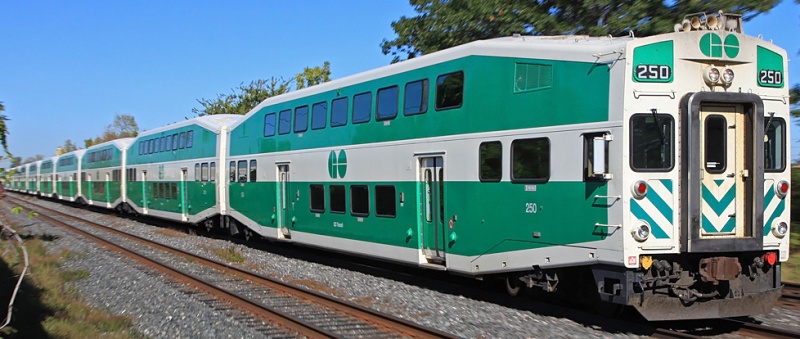
Walter Pfefferle rode the last GO train to Niagara Falls on October 14th from Burlington to Niagara Falls, then Niagara to Toronto Union Station and finally back to Burlington. The video contains the highlights, trains, and Autumn colours. http://www.youtube.com/watch?v=9ej3UHHYo-4&feature=share
GO VIGNETTES:
GO GP40TC 9806 is seen at the station in Pickering, ON April 17th, 1971. These units later went to Amtrak, and many of these commuter cars went to Montreal, (Photograph by Carl Sturner)
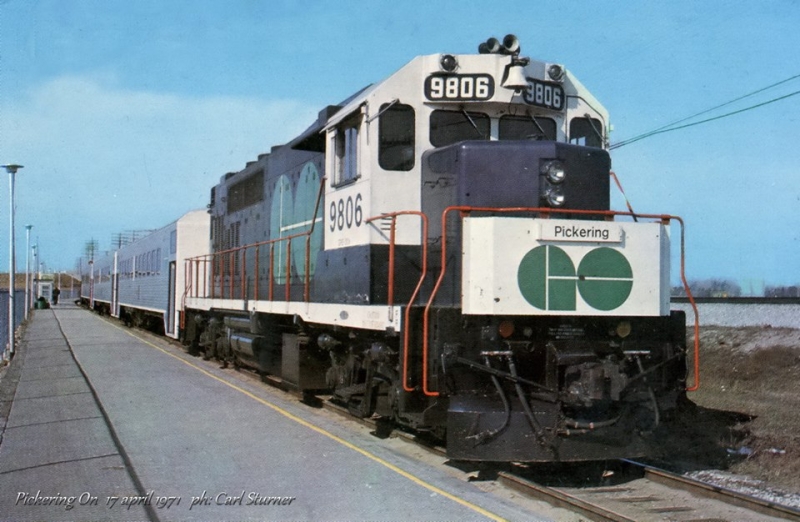
On September 18th, 1994 Kevin Piper clicked (former GO) AMTRAK GP40TC 196 in Chicago, IL.
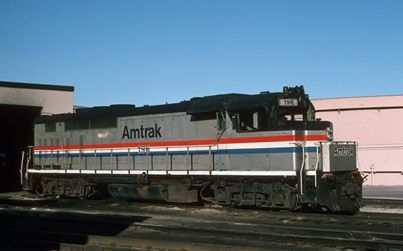
TTC News:
Bob Baker snapped this interesting CP load for TTC stopped at Smiths Falls, ON October 10th. 2013 after it had spent time in Ottawa’s National Research Council, and is now destined to Thunder Bay, ON for more testing.
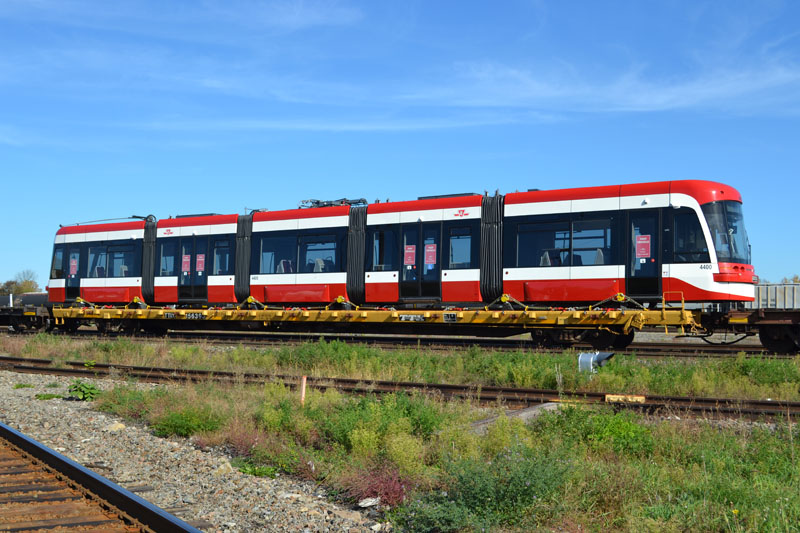
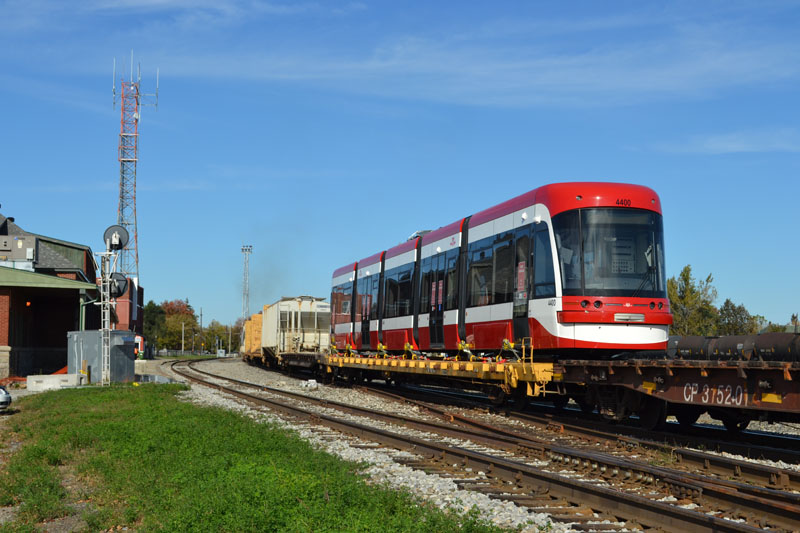
Edited By Mark Forseille: <dmarkforseille@telus.net>
In last month’s CRO I featured the West Coast Express Station in Pitt Meadows, BC.
This month’s issue, we move west to Port Coquitlam’s Station. Located at MP 111 of CP’s Cascade Subdivision, CP’s main yard “Coquitlam” is located at this location.
The first two photos are of the Port Coquitlam Station main entrance.
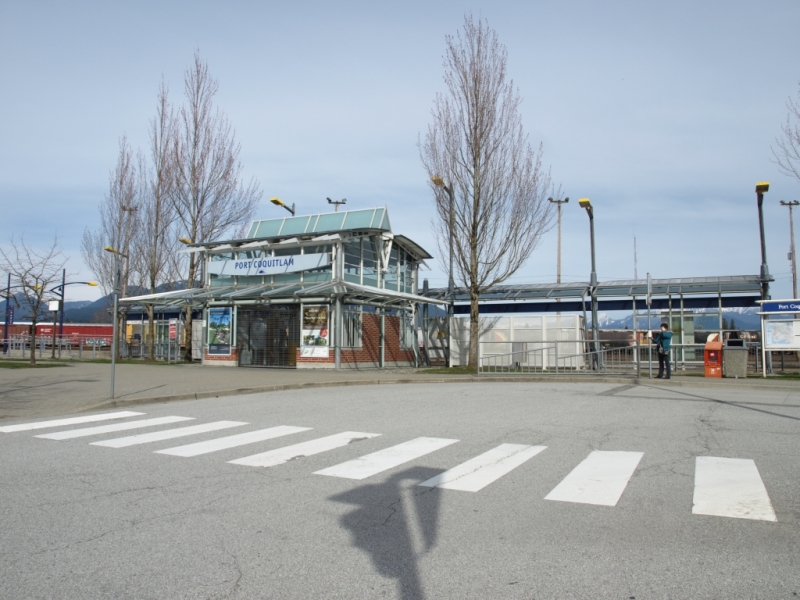
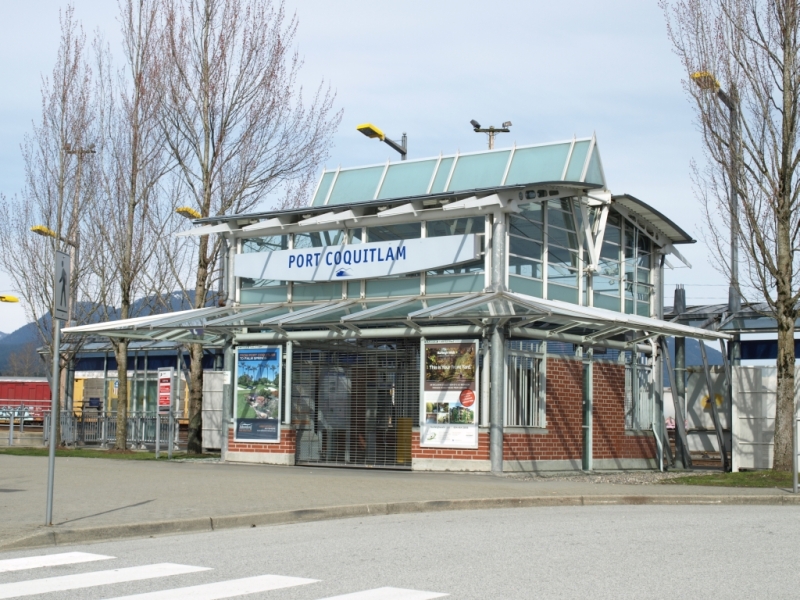
In the next photo, is a view of the station platform looking east. CP’s main line tracks are on the left of the platform.
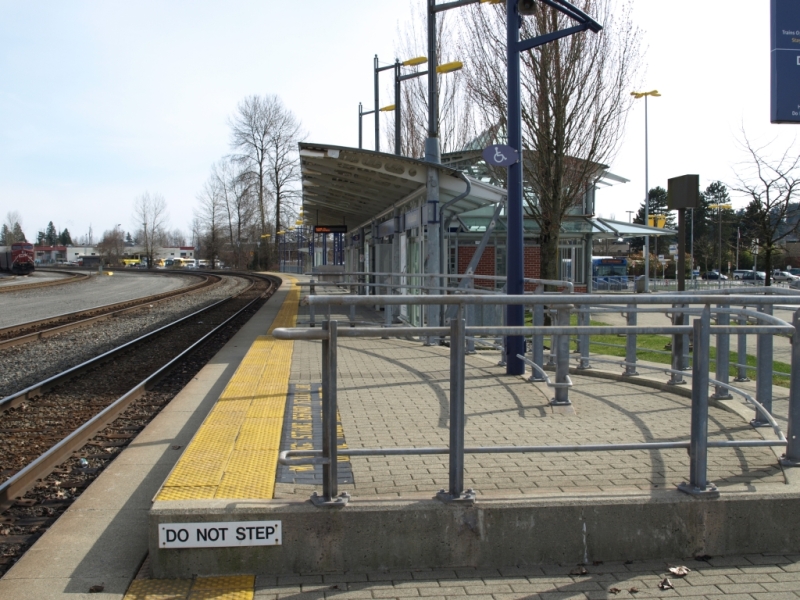
In this photo, we’re now looking West on the station platform. In the foreground, you can see the heightened access for passengers with disabilities using wheelchairs.
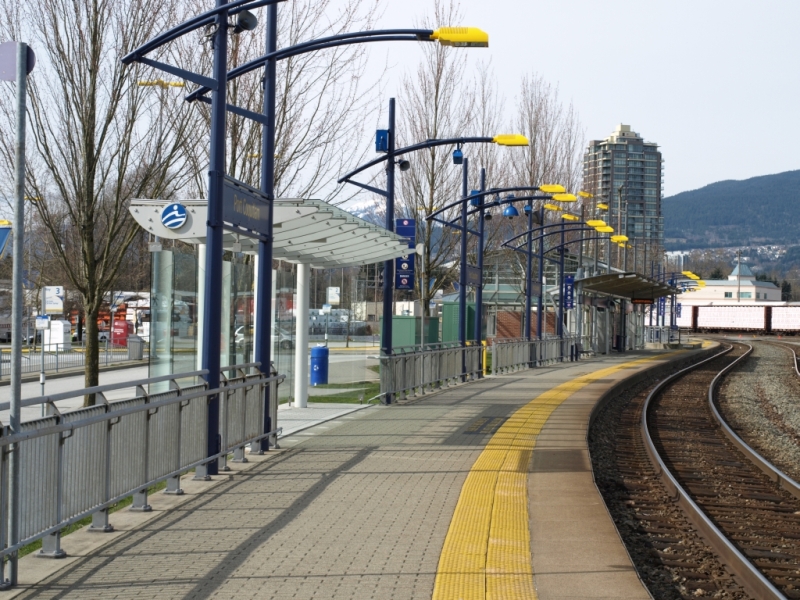
Some of the signage on the platform at the Port Coquitlam station.
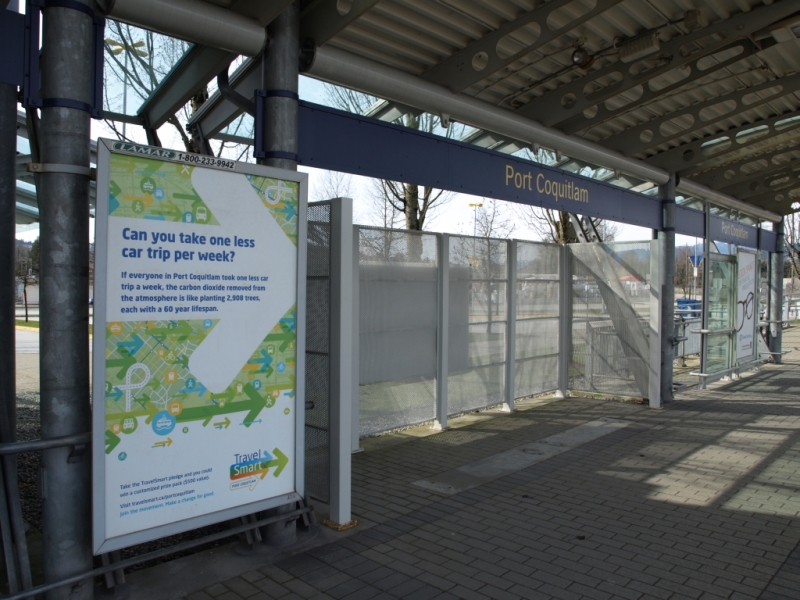
Some photos of West Coast Express trains at the Port Coquitlam Station.
The first two photos show WCE F59PHI # 902 and Cab Control Car # 103 on June 28th, 2006.
The next photo is of F59PHI # 905 on July 21st, 2006 .
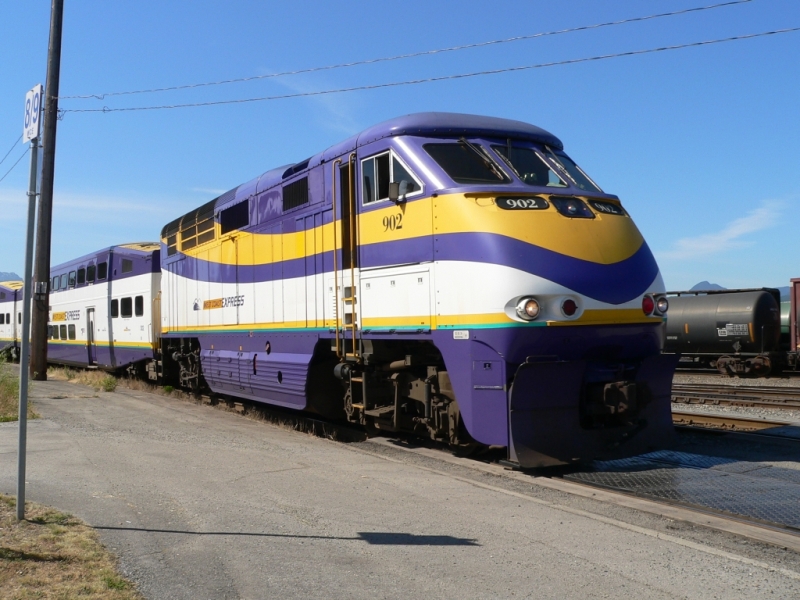
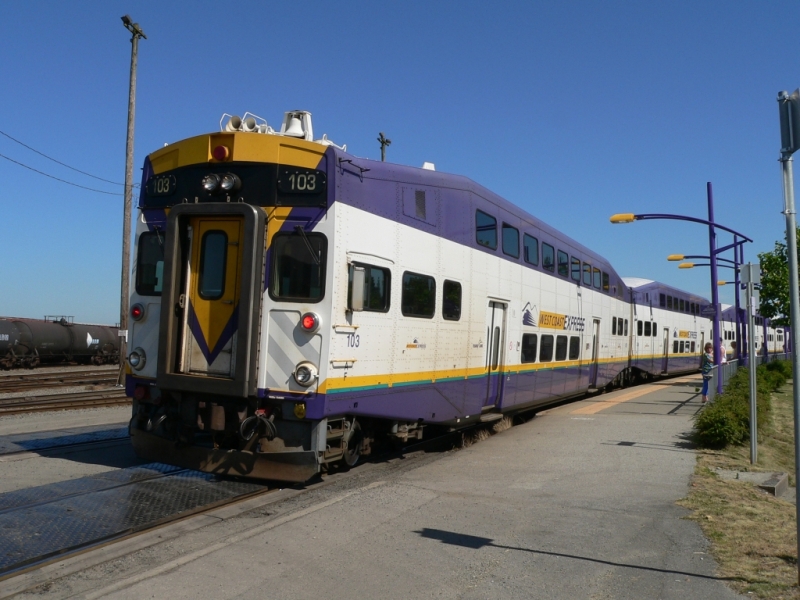
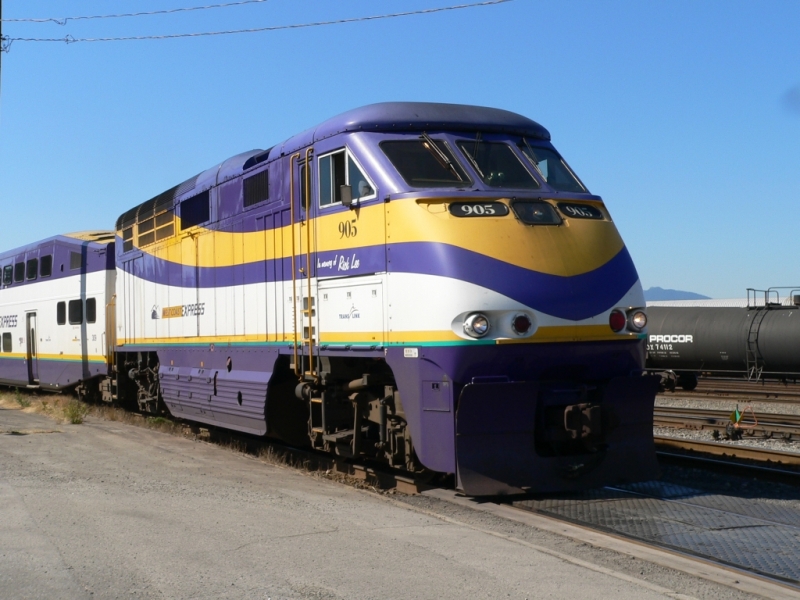
The last photo back in Oct 19th, 1995 is of the WCE #901 was during testing of the equipment before the system started running with paying passengers.
They were using some GO Transit coaches for these tests.
In the early days of the West Coast Express, some trains ran with GO cars until the WCE cars were delivered.
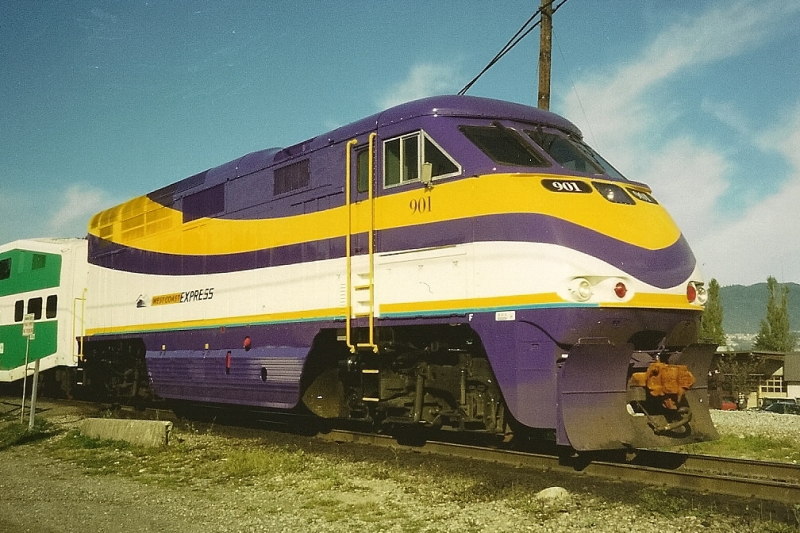
Recent West Coast Express News
From the Vancouver Metro newspaper story by Kate Webb.
For the entire story, click on this link.
http://metronews.ca/news/vancouver/814524/translink-reveals-who-will-be-first-to-get-new-compass-cards/
West Coast Express riders are going to be first in line to get TransLink’s new Compass Card later this fall, followed by those with government-issued bus passes in the New Year and then students.
TransLink vice president of enterprise initiatives Mike Madill revealed on Wednesday how the staggered rollout will work after announcing the success of the beta test phase.
Between Sept. 9 to Oct. 1, 10,000 beta testers registered more than half a million taps on buses, at rail stations and SeaBus terminals. TransLink says the online feedback they collected shows most testers found the system easy to use, which means the fall introduction will go ahead as planned.
AMTRAK IN CANADA
(Edited by William H Baird)
editor@canadianrailwayobservations.com
Francois Jolin photographed an Amtrak “Special Move” at St-Jean QC : Two coaches and a locomotive damaged following a grade crossing accident at St-Valentin QC are returning south from Montreal to Albany, NY on September 10th, 2013
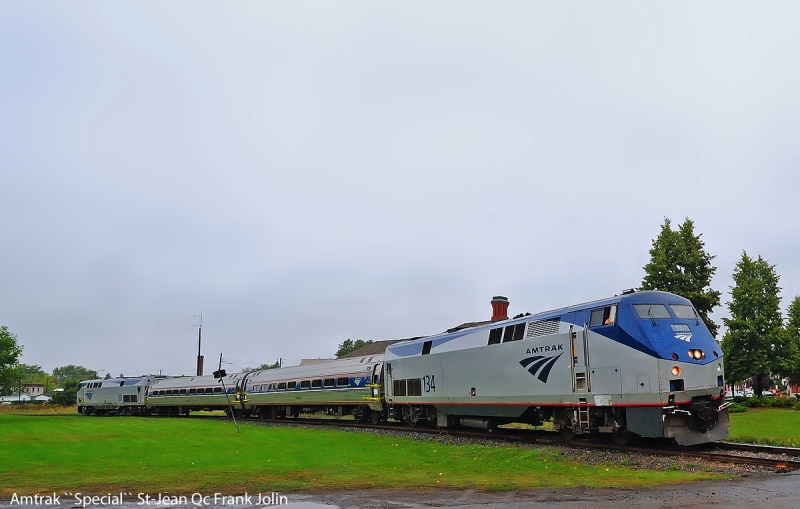
The Amtrak “Adirondack” with the full dome “Ocean View” is negotiating a curve at St-Jean, QC as it heads south toward the US border crossing at Rouses Point, N.Y on September 1st.
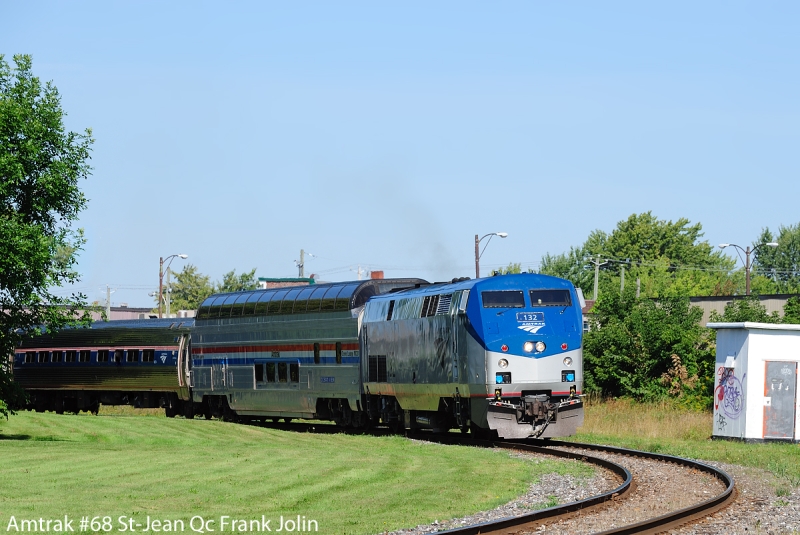
AMTK 90278 and AMTK 40 on train 510 North at Douglas Road, Mile 151.0, CN New Westminster Sub in British Columbia 2013/09/10 (Andy Casidy)
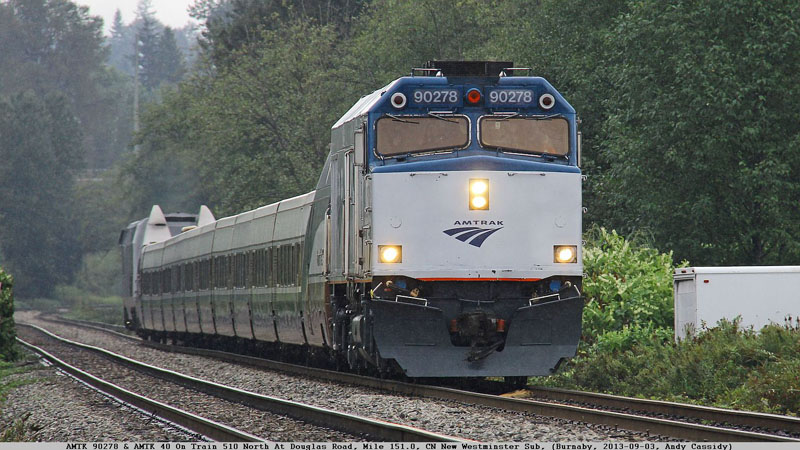
Please submit your AMTRAK IN CANADA Photos for CRO directly to William H. Baird at: editor@canadianrailwayobservations.com
© CRO October 2013
